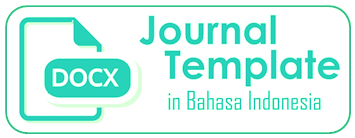Balancing Taxation in the Indonesian P2P Lending Landscape: Ensuring Fair and Equitable Treatment
DOI:
https://doi.org/10.35335/legal.v12i6.890Keywords:
P2P lending , Value Added Tax, TaxationAbstract
This research aims to evaluate and compare the legal framework and tax policies of peer-to-peer lending (P2P lending) in various countries, using a normative juridical research approach. This research explores the tax implications and regulatory treatment of financial technology, particularly P2P lending platforms. The normative juridical research method focuses on the study of legal norms, principles, and doctrines. The results of this study show that there are significant similarities and differences in the VAT tax policies on P2P lending services in countries such as the European Union, Australia, Canada, and New Zealand. Each country recognises contributions under the P2P lending model as the provision of credit, which is generally exempt from VAT. However, there are differences in the treatment of the credit itself, eligibility for input tax credits, and the application of the principle of fiscal neutrality. From an Indonesian perspective, it is important to adapt tax regulations to digital innovations in the financial sector, considering the unique characteristics of technology-based financial services such as P2P lending. This policy should be able to address the complexity of services provided by P2P lending platforms and ensure fair and equitable tax treatment
Downloads
References
Basha, S. A., Elgammal, M. M., & Abuzayed, B. M. (2021). Online peer-to-peer lending: A review of the literature. Electronic Commerce Research and Applications, 48, 101069.
Beck, T., & De la Torre, A. (2006). The basic analytics of access to financial services (Vol. 4026). World Bank Publications.
Budianto, A. (2020). Legal research methodology reposition in research on social science. International Journal of Criminology and Sociology, 9(1), 1339–1346.
Cai, C. W. (2018). Disruption of financial intermediation by FinTech: a review on crowdfunding and blockchain. Accounting & Finance, 58(4), 965–992.
Kandpal, V., & Mehrotra, R. (2019). Financial inclusion: The role of fintech and digital financial services in India. Indian Journal of Economics & Business, 19(1), 85–93.
Kartiko, N. D., & Rachmi, I. F. (2021). Designing Value Added Tax Policy on Peer-To-Peer Lending in Indonesia. Journal of Applied Finance and Accounting, 8(1), 46–62.
Kartiko, N., & Rachmi, I. F. (2021). Fintech Lending Tax Planning Strategy Based On Indonesian Taxation Rules. Jurnal Hukum: Activa Yuris.
KPMG. (2022). The future of indirect taxation in a digital world. https://kpmg.com/xx/en/home/insights/2022/09/proposition-3-transactions-in-the-digital-economy.html
Lenz, R. (2016). Peer-to-peer lending: Opportunities and risks. European Journal of Risk Regulation, 7(4), 688–700.
Negara, T. A. S. (2023). Normative Legal Research in Indonesia: Its Originis and Approaches. Audito Comparative Law Journal (ACLJ), 4(1), 1–9.
Ofir, M., & Sadeh, I. (2019). A Revolution in Progress: Regulating P2P Lending Platforms. NYUJL & Bus., 16, 683.
Omarini, A. E. (2018). Peer-to-peer lending: business model analysis and the platform dilemma. International Journal of Finance, Economics and Trade (, 2(3), 31–41.
Otoritas Jasa Keuangan. (2023). Penyelenggara Fintech Lending Berizin di OJK per 9 Maret 2023. https://ojk.go.id/id/kanal/iknb/financial-technology/Pages/Penyelenggara-Fintech-Lending-Berizin-di-OJK-per-9-Maret-2023.aspx
Patwardhan, A. (2018). Peer-to-peer lending. In Handbook of Blockchain, Digital Finance, and Inclusion, Volume 1 (pp. 389–418). Elsevier.
Pazarbasioglu, C., Mora, A. G., Uttamchandani, M., Natarajan, H., Feyen, E., & Saal, M. (2020). Digital financial services. World Bank, 54.
Pfeiffer, S. (2017). A VAT/GST Perspective on Crowdfunding. VAT and Financial Services: Comparative Law and Economic Perspectives, 223–255.
Saiedi, E., Mohammadi, A., Broström, A., & Shafi, K. (2022). Distrust in banks and fintech participation: The case of peer-to-peer lending. Entrepreneurship Theory and Practice, 46(5), 1170–1197.
Schenk, A., Thuronyi, V., & Cui, W. (2015). Value added tax. Cambridge University Press.
Stanley, N., & Kohardinata, C. (2023). Impact of Tax Implementation on Fintech P2P Loans in Indonesia. EconBank: Journal of Economics and Banking, 5(2), 189–201.
Sukardji, U. (2015). Pajak Pertambahan Nilai (PPN). Jakarta: PT Raja Grafindo Persada.
Talahaturusun, J. A., & Kohardinata, C. (2024). Impact of tax regulation on the development of financial technology in Indonesia. Journal of Enterprise and Development (JED), 6(1), 77–85.
Teplý, P., Roshwalb, Y., & Polena, M. (2021). Financial disintermediation: the case of peer-to-peer lending. The Palgrave Handbook of FinTech and Blockchain, 375–401.
Tritto, A., He, Y., & Junaedi, V. A. (2020). Governing the gold rush into emerging markets: a case study of Indonesia’s regulatory responses to the expansion of Chinese-backed online P2P lending. Financial Innovation, 6(1), 1–24.
van Brederode, R. F. W., & Krever, R. (2017). VAT and Financial Services. Springer.
Van Doesum, A., & Van Kesteren, H. (2016). Fundamentals of EU VAT law. Kluwer Law International BV.
Yang, H. (2019). Fintech as a Strategy of Financial Inclusion in the Age of Digitalization. Journal of APEC Studies, 11(2), 93–106.
Zalan, T., & Toufaily, E. (2017). The promise of fintech in emerging markets: Not as disruptive. Contemporary Economics, 11(4), 415–430.
Downloads
Published
How to Cite
Issue
Section
License
Copyright (c) 2024 LEGAL BRIEF

This work is licensed under a Creative Commons Attribution-NonCommercial 4.0 International License.





